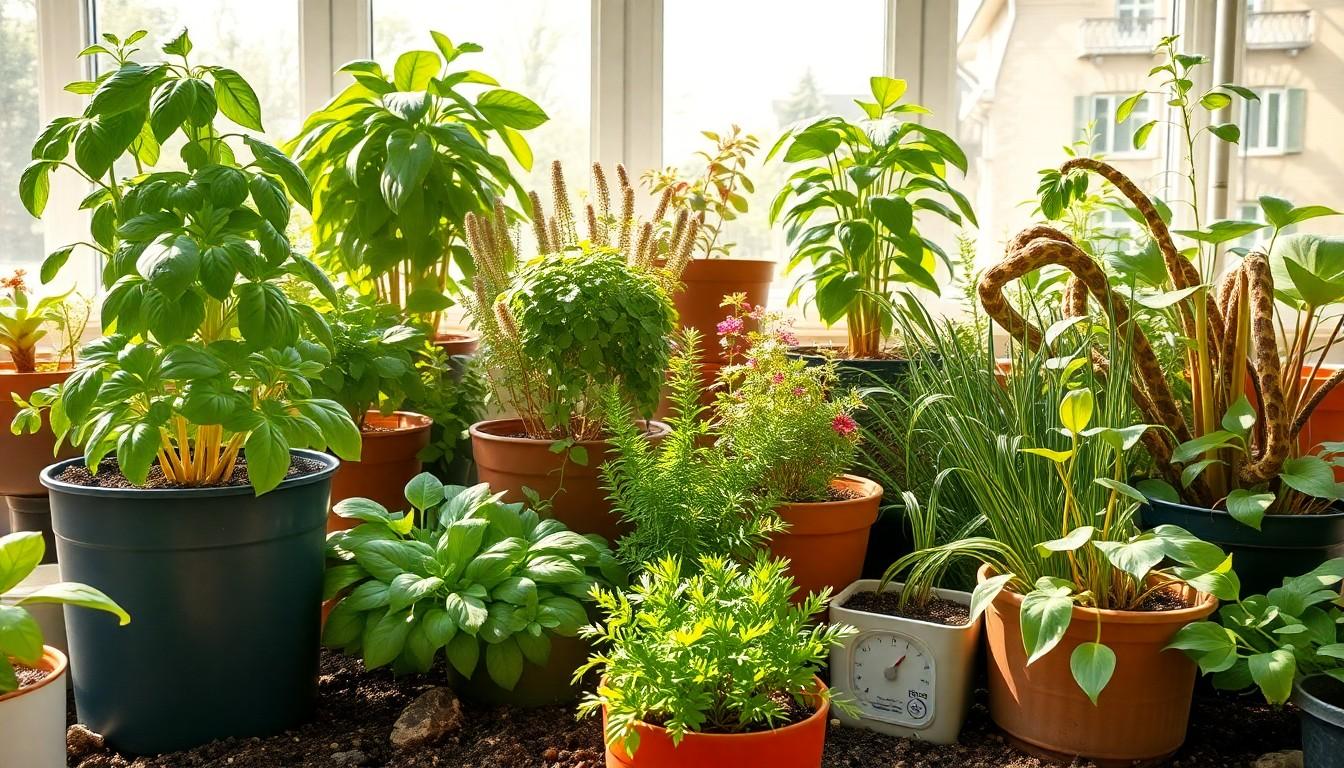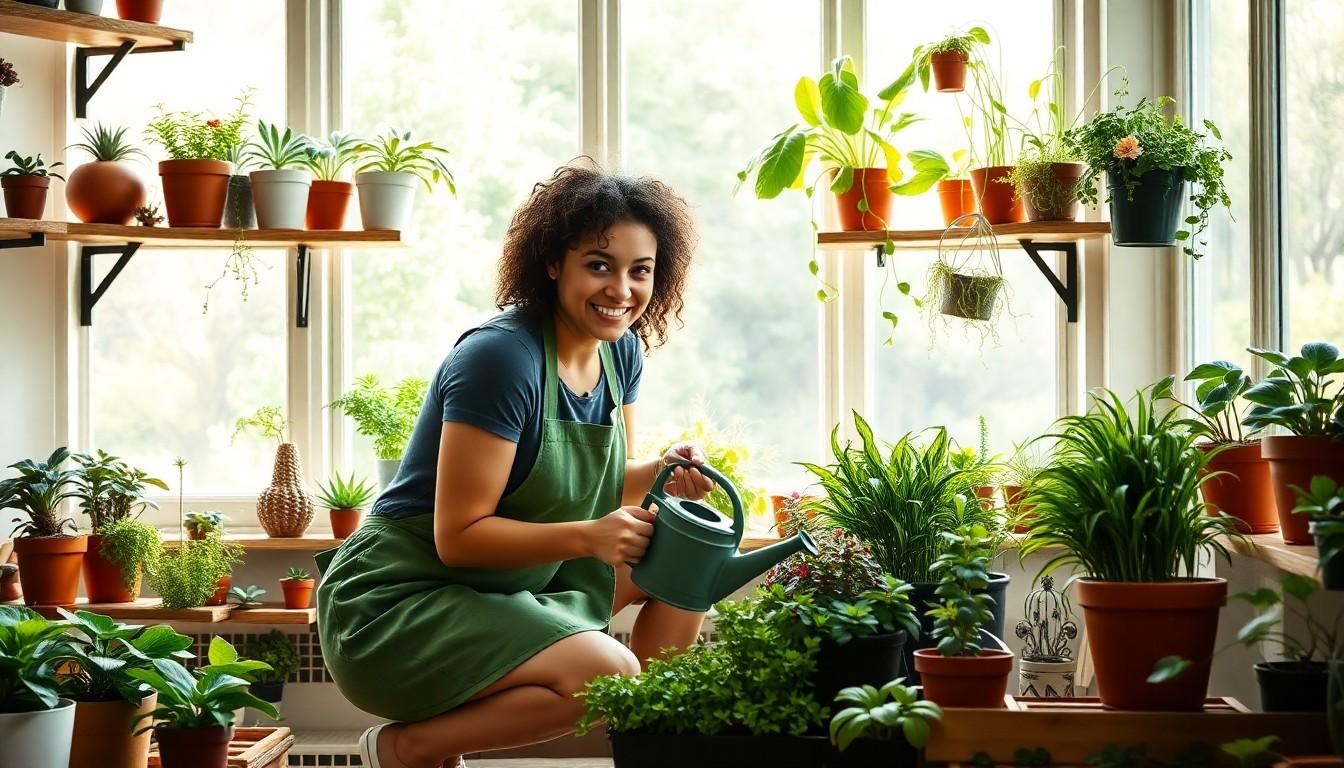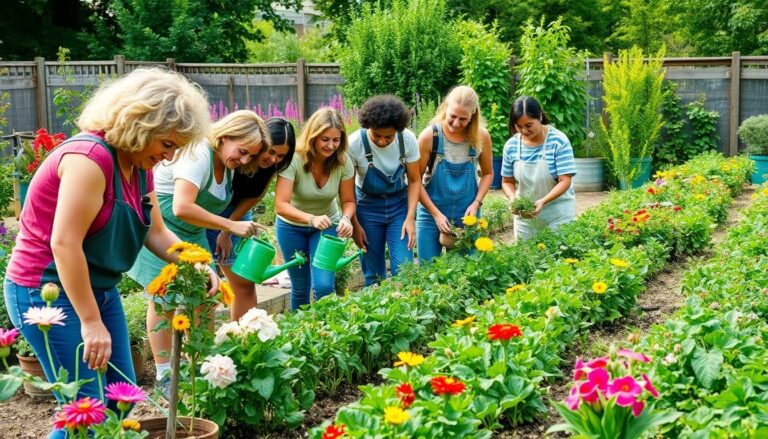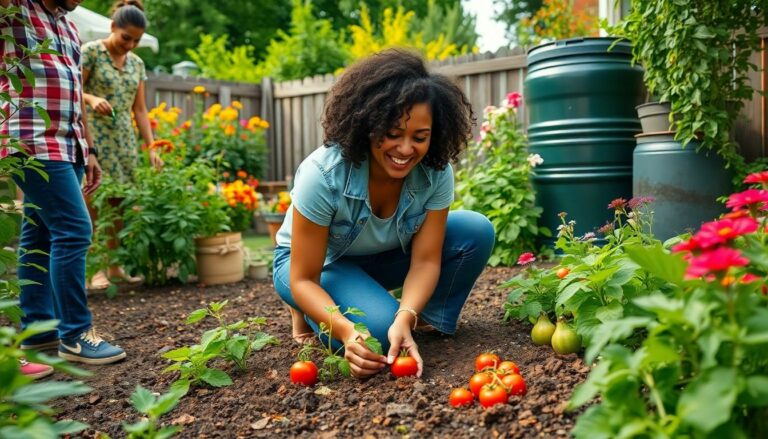Imagine transforming your living space into a lush oasis without ever stepping outside. A sustainable indoor garden isn’t just a trend; it’s a lifestyle choice that brings nature indoors while saving the planet one leaf at a time. With a bit of creativity and a sprinkle of dedication, anyone can cultivate a thriving green sanctuary right in their home.
sustainable indoor garden
A sustainable indoor garden integrates eco-friendly practices into indoor gardening. This approach focuses on creating a self-sustaining ecosystem that supports plant growth while reducing environmental impact.
Definition and Concepts
Sustainable indoor gardening emphasizes using organic methods and renewable resources. It involves choosing native plants well-adapted to indoor conditions. Utilizing natural light and rainwater collection contributes to sustainability. Container gardening and hydroponics are popular techniques that minimize space while fostering plant health. These concepts highlight the importance of balance in indoor ecosystems.
Benefits of Sustainable Practices
Sustainable practices in indoor gardening offer multiple advantages. First, they promote air purification, improving indoor air quality. Utilizing organic fertilizers and pest control methods minimizes chemical exposure and promotes health benefits. Another advantage is the reduction of carbon footprint through local food production. Sustainable indoor gardens also enhance mental well-being by providing a calming environment. Overall, these practices cultivate resilience in the face of environmental challenges.
Key Components of a Sustainable Indoor Garden

Creating a sustainable indoor garden involves specific components that enhance plant health and environmental harmony.
Choosing the Right Plants
Selecting plants that thrive indoors is crucial. Opt for native species that require minimal maintenance and adapt well to indoor conditions. Herbs like basil and parsley enhance culinary experiences while purifying air. Succulents and snake plants are excellent low-light options, making them ideal for beginners. Consider plants that align with sustainability goals, such as those providing food or natural air filtration.
Soil and Fertilization Options
Soil quality impacts plant growth significantly. Use organic potting mixes that retain moisture and provide essential nutrients. Examples include coconut coir and compost, both promoting healthy root development. Fertilization options should focus on natural substances like worm castings or kelp meal, which nourish plants without harmful chemicals. Regular testing of soil pH helps maintain optimal conditions for growth.
Efficient Watering Techniques
Implementing efficient watering techniques conserves resources and supports plant health. Utilize self-watering pots that supply consistent moisture while minimizing waste. Grouping plants with similar water needs fosters efficient care. Consider drip irrigation systems that deliver water directly to roots, reducing evaporation. Monitoring soil moisture levels with a moisture meter ensures plants receive adequate hydration without overwatering.
Design Ideas for Sustainable Indoor Gardens
Creating a sustainable indoor garden involves innovative design strategies that embrace eco-friendly practices. These ideas enhance the gardening experience while promoting sustainability.
Using Recycled Materials
Repurposing materials significantly contributes to sustainability in indoor gardens. Old containers like tin cans or glass jars make excellent pots when cleaned properly. Wooden pallets, when transformed, function as vertical garden structures. Using wine corks can create drainage layers for potted plants. Upcycling these items not only saves money but also reduces waste, demonstrating creativity in gardening. Integrating recycled materials fosters an eco-conscious mindset, encouraging gardeners to recognize the environmental impact of their choices.
Optimizing Space Utilization
Maximizing space becomes crucial in maintaining an indoor garden. Vertical gardening systems allow plants to grow upward, which saves floor space. Hanging planters, while attractive, also provide room for different plant types. Modular shelves or wall-mounted units effectively organize various herbs or succulents. Incorporating multi-functional furniture, like tables with built-in planters, further enhances space efficiency. Employing these techniques ensures that every inch is utilized, thereby creating a thriving indoor oasis even in limited areas.
Tips for Maintaining a Sustainable Indoor Garden
Maintaining a sustainable indoor garden involves careful attention to various factors, ensuring that plants thrive in harmony with eco-friendly practices.
Pest Management Strategies
Implementing pest management strategies protects plants from damage while promoting sustainability. Monitor plants frequently for signs of pests like aphids and spider mites. Insecticidal soap or neem oil provides natural remedies to combat infestations effectively. Introducing beneficial insects like ladybugs can also help control pest populations. Encouraging plants to flourish without harmful chemicals results in a healthier indoor ecosystem. Maintaining cleanliness around the garden space prevents pest attraction, while companion planting can naturally repel unwanted insects.
Seasonal Care Practices
Adjusting seasonal care practices enhances plant growth throughout the year. During winter, reducing watering frequency is essential as plants tend to enter dormancy. Potting soil should remain slightly moist without becoming soggy. In spring, consider repotting plants into larger containers to accommodate growth. Ensuring adequate sunlight exposure is crucial, especially in changing seasons, so rotating plants for even light distribution enhances vitality. During summer months, increase humidity levels to keep tropical species thriving. Fall maintenance may involve pruning and removing dead leaves to promote air circulation and prevent disease.
healthier planet for future generations
Creating a sustainable indoor garden is a rewarding endeavor that combines environmental responsibility with personal creativity. By integrating eco-friendly practices and choosing the right plants, individuals can cultivate a thriving green space that enhances their living environment.
The benefits extend beyond aesthetics, contributing to improved air quality and mental well-being. Through innovative design and efficient maintenance techniques, anyone can transform their indoor space into a self-sustaining ecosystem. Embracing this lifestyle not only fosters a deeper connection with nature but also promotes a healthier planet for future generations.




